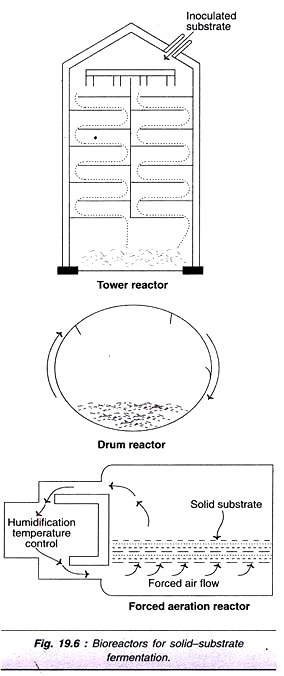This article throws light upon the 8 major types of soils of arid zone. The types are: 1. Sand Dunes 2. Light Brown Sandy Soils 3. Gravelly and Had Pan Soils 4. Brown Light Loams 5. Grey Brow Loams 6. Sierozems Sierozems with Dunes 7. Soils of Gahggar Flood Plain Bed Fine Alluvium 8. Saline Flood Plains with Dunes.
Type # 1. Sand Dunes (Typic Torripsamments):
Dunnes may occur in all these zones and on any soil surface. They are dominant formation covering nearly 29 per cent area and subdominant associate in 25.3 per cent area in this region. These are mineral soils showing very little or no evidence of pedogenic development.
Their profiles have uniformly fine sand texture which is single grain, loose throughout the depth of even more than 2 m. Their colour differs in different localities ranging from pale brown to brown. These highly fine sandy soils have 1.8 to 4.5% clay, 0.4 to 1.3% silt, 63.7 to 87.3% fine sand and 11.3 to 30.3% coarse sand.
Calcium carbonate is also present in diffused or powder from. They very low water retention capacities. Infiltration rates are very high so any amount of rain received gets quickly into deep layers.
Type # 2. Light Brown Sandy Soils (Typic Camborthids/Typic Calciorthids, Coarse Loamly):
Light brown sandy soils associated with dunes and sandy hummocks occupy 25.3 and 6.75% area respectively. In hummocky area, the soils surface is characterised by 20 to 40 mm thick wind sorted loose sand followed by a loamy sand sub-soil over weakly developed lime concretionary depth varying from 90 to 120 cm.
The hummocks are mostly 10 to 50 m long and 1 to 4 m high and occur both in fields and along fence lines. The soils are dominantly brown sometime pale brown with weakly calcareous loamy sand sub-soil forming weak blocky structure.
They are also low in organic matter status. Presently they are largely cultivated though there is severe incidence of wind erosion.
Type # 3. Gravelly and Had Pan Soils (Typic Paleorthids Coarse Loamy):
soils with hard indurated petro-calcic thick CaCO3 deposit horizons at shallow depth are brown generally light textured with thin subsoil of loamy sand and a hard largely indurated lime concretionary pan or cemented gravels, at about 40 to 60 cm depths. The thickness of petro-calcic indurated horizon is more than a metre. This hard stratum is slightly permeable to water but difficult for plant roots to penetrate though causing depth limitation.
Type # 4. Brown Light Loams (Typic Calciorthids, Coarse Loamy):
These are characterised by their pale brown to dark reddish brown colour, loamy fine sand to fine sandy loam texture with weakly blocky structure at surface and slightly heavier texture, darker colour and calcareous sub-soil. The substratum is again a zone of lime accumulation at depths varying from 60 to 120 cms.
These soils are somewhat better with respect to texture and structural development. They are loamy sand to sandy loam at surface and sandy loam to loam in sub-soil. They have water retention capacity of 60 to 120 cm per metre depth. The soils are therefore less droughty.
Type # 5. Grey Brow Loams (Typic Calciorthids, Fine Loamy):
These soils occupy predominant positions in south eastern and central part in western Rajasthan and cover an area of about 10.9%. This intact is a semi-arid zone with a higher rainfall of 250 to 500 mm in this region. No sandy hummock or dunes are observed on these soils.
These are dark brown to brown sand loam to loam at surface and dark brown to dark greyish brown loam sandy clay loam, or clay loam in subsoil, over a thick zone of well-developed lime Concretion and lime coated gravels. Soils are poor in organic matter but its cogent is little higher than in the coarse textured arid soils.
Type # 6. Sierozems Sierozems with Dunes (Coarse Loamy Typic Calciorthids/Camborthids):
These soils are developed on the alluvium brought about by Ghaggar and allied streams from the Siwaliks and it extends largely in part of Haryana and Punjab. They occupy 7.6% of the area. In these level areas, there are small areas covered with low level dunes or hummocks of very find sand.
The soils are brown to light brownish grey often moderately calcareous, very fine loamy sand at surface, fine sandy loam or finer with moderately developed blocky structure in the subsoil.
Type # 7. Soils of Gahggar Flood Plain Bed Fine Alluvium (Typic Torrifluvents):
The fine alluviums are confined to the present day course of the Ghaggat and its tributaries. There are also large areas in the south in the lower Luni catchment, with patches of fine alluvial flood plains of the recent past. Large areas of these plains have been engulfed by Aeolian sand deposits in dunes or hummocky form.
Soils are devoid of much pedogenic activity except for some structural formations and some redistribution of alkaline earth material or variations in particle size in stratified layers pointing to their recent origin. Often they are highly saline, calcareous and with high water table.
Type # 8. Saline Flood Plains with Dunes (Typic Salorthids and Torripsamments):
Soils are devoid of much pedogenic activity except for some structural formation and some redistribution of alkaline earth carbonates. They are highly saline, calcareous and with high water table. Besides these, major soil areas of the region are big and small patches soil affected lands like playas, salt basins etc.
Due to characters like coarse texture, lack of good structure and low organic matter, soils have low water retention capacities, that makes them droughty and limits the crop growth. Further there are large areas with allow soils and indurated carbonate pan formations at shallow depths. This further limits the root growth and water retention in the soils solum, making soil more droughty.


